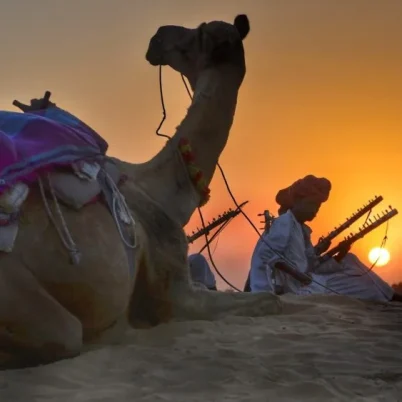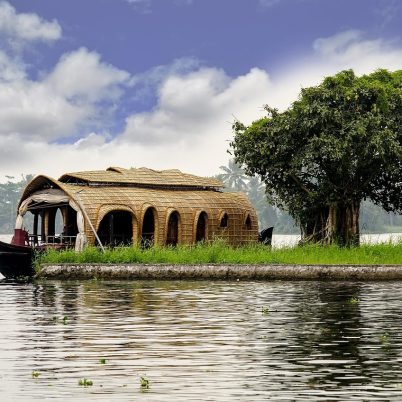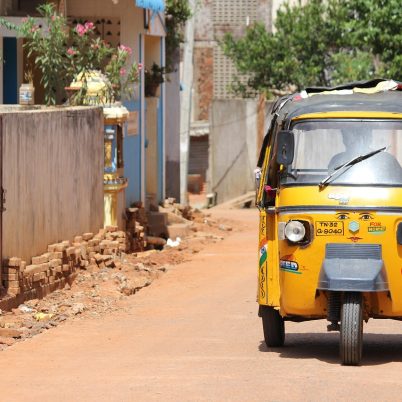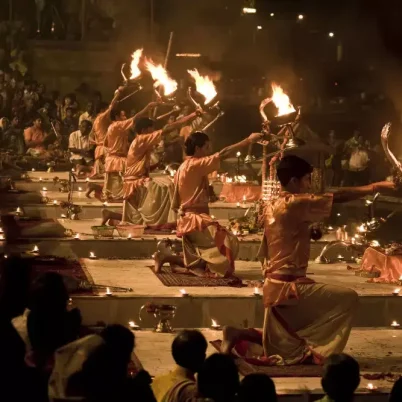
If you are a hiking enthusiast, you will find some of the best places for hiking in India. While the Himalayas are an obvious choice, you will be surprised by the variety of hiking places in India, even for beginners. India is still an emerging destination for trekking, but that’s what makes it special – the natural landscapes are more pristine, and interactions with locals are more authentic.
There are many, many treks in India – while some last for days, some are shorter day hikes. From the snowy peaks in the North to the lush green hills in the South, there is something unique in every trek. In this blog, we talk about the best destinations for trekking and tips to make your hiking adventures in India memorable!
North India
The place where snow falls – this is the literal translation of the Himalayas, one of the highest mountain ranges in the world. There are countless hikes and treks you can explore here. Whether you love adventure, nature, or just want to relax, the Himalayas have something for everyone.
Here are a few places in North India that make for amazing trekking destinations.
Jammu and Kashmir
In the northernmost part of India, the Himalayas offer snow-capped views, pristine villages, and a sense of spirituality and adventure. As you travel through Ladakh and Zanskar, you can witness rugged mountain peaks and Buddhist enclaves. You can have your luggage carried by pack animals and have experienced leaders guide you through the various treks. But stay cautious and plan enough time, since altitude sickness is a major concern in this region. You may also need special permits for Ladakh, so be sure to check it beforehand.
If you want a bit more thrill, you have to try the Chadar Trek. You will walk on the frozen Zanskar River in February along an ancient trade route, hike through snow, cross ice bridges, and stay in rock caves overnight in this exhilarating adventure!
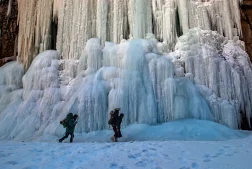 Chadar Trek, Ladakh (Picture credits: CNN)
Chadar Trek, Ladakh (Picture credits: CNN)
Himachal Pradesh
While treks in Jammu and Kashmir are majorly for experienced trekkers, Himachal Pradesh offers many types of treks, from peaks best suited for amateur climbers, like Friendship Peak at 5289 meters, to those for experienced trekkers, such as Deo Tibba at 6001 meters. There are also many one-day and multi-day treks through lush meadows with views of the mountains. McLeodganj in Dharamshala is a popular trekking destination in India, and a great starting point for many treks.
If you want to experience the local culture and people along with the natural landscapes, you can try the Homestay Trail. This five-day trek includes accommodations in homestays, allowing you to experience the authentic local culture and cuisine in a sustainable way.
Two recommendations from India Someday are the six-day Pin Bhaba Trek, which takes you through glaciers and verdant landscapes, and the picturesque KhirGanga Plateau, with thermal springs above the Parvati Valley.
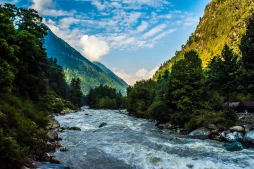 Parvati Valley, Himachal Pradesh
Parvati Valley, Himachal Pradesh
Uttarakhand
The land of Gods has exceptionally stunning hiking trails and a deep sense of spirituality. One of the highlights is the trek to the Gangotri Glacier, the source of the holy river Ganges. It is considered to be one of the holiest sites in India, and many Indian pilgrims consider this journey extremely significant. Another place is Om Parvat, where a snow formation on the peak resembles the sacred symbol Om. You will come across small temples throughout the region even on shorter day hikes. However, these sites can be crowded with Indian tourists, especially in May.
Another major attraction in Uttarakhand is the Valley of Flowers National Park, which blooms vibrantly during late August. You will see a floral carpet surrounded by snow-capped mountains, an enchanting sight like no other. The valley is worth visiting throughout the year. For those seeking more challenging adventures, glacier treks to the Milam and Pindari Glaciers are excellent options.
 Valley of Flowers, Uttarakhand (Picture credits: Outlook Traveller)
Valley of Flowers, Uttarakhand (Picture credits: Outlook Traveller)
Rajasthan
You might not think of Rajasthan when you think of trekking in India, but in the northern part of Rajasthan is Mount Abu, a hill station at the foothills of the Aravalli Range. If you want an escape from the heat of Rajasthan, head up to Mount Abu. Here, you can embark on day hikes through forests and small lakes, and come across Hindu and Jain shrines and interact with nomads. However, do not trek through the mountains without an experienced guide, and be cautious of wild animals.
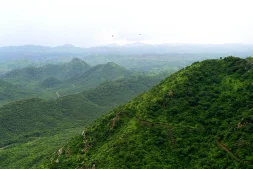 Aravalli Range, Rajasthan
Aravalli Range, Rajasthan
Northeast India
The tourist infrastructure in Northeast India is still developing, which means it is comparatively untouched. You can find unique hikes in this region, especially at the foothills of Himalayas in Assam and Arunachal Pradesh. We would recommend booking guided treks or at least have a local guide with you who is familiar with the bureaucracy of permit applications and local conditions.
Sikkim
Sikkim has many peaks towering over 6000 meters, making for some exceptional hikes. You can opt for day hikes or multi-day hikes, experience rural life in the local villages, and travel through winding trails across various landscapes. To capture the essence of Sikkim, the Khangchendzonga Trek is perfect, although you will need a guide to undertake it.
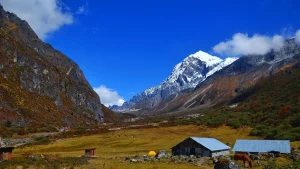 Kanchendzonga National Park, Sikkim
Kanchendzonga National Park, Sikkim
Best time to go hiking in North india
The Indian summer season, especially May and June, is particularly pleasant for trekking and hiking in the mountains, as long as you are not visiting the overcrowded pilgrimage sites. The monsoon season from June to September can be dangerous in a few areas due to heavy rains and landslides, but it is after monsoon from September to November that the true beauty of the Himalayas unfolds. From November to March, the winter season in india, many facilities in the Himalayas are closed due to heavy snow. In April, while the rest of the country faces heat, the hill stations offer a cool respite.
See also: Trekking in McLeodganj Dharamshala
South India
When you think of hiking in India, you might think of the Himalayas. But there is another mountain range in India that is older and not as high – the Western Ghats, or the Sahyadris. Stretching up to 2000 meters high, the Western Ghats run along the west coast of India, starting from Gujarat through Maharashtra, Goa, Karnataka, Kerala, and all the way to Tamil Nadu. the primary hiking destination in South India, the Western Ghats have pleasant weather and a large biodiversity. Whether you are exploring the tea and spice plantations or going for longer hikes in Wayanad and the Nilgiri region, these areas in South India are ideal for relaxed tours and beautiful views.
If you want more adventure, consider ascending the Meesapulimala in Kerala at 2640 meters, one of the most challenging treks in South India.
The Eastern Ghats of Andhra Pradesh offer multi-day treks through forests, revealing waterfalls and a variety of flora and fauna.
Read more: Most popular treks in South India
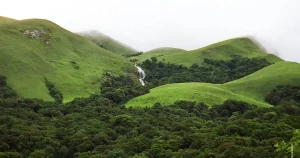 Western Ghats
Western Ghats
Best time to travel for trekking in South India
The best time for trekking in South India is during the summer season, from March to June. The mountain range is cool and pleasant, providing an escape from the sweltering heat and humidity along the coast. If you prefer an even cooler climate, the winter months from November to February are perfect. There are many treks popular in the monsoon season from June to October, as the landscape turns lush green.
See also: Best treks in Karnataka
General tips for hiking and trekking in India
Now that you know where you can go trekking in India, here are some general tips and guidelines:
- India is not as popular for hiking as some other places like Nepal. Therefore, especially if you are going off the beaten path, we would advise you to have a local guide who knows the region well. Even if you book a guide through an operator, make sure to sign a contract beforehand outlining the essential details. Also, check if you need special permits for the area you plan to hike in.
- In the far north, there are many treks where pack animals are used for carrying your luggage. We would always recommend making use of the animals, since carrying your own gear at higher altitudes can get very strenuous.
- Some essentials for your hiking packing list include hiking boots or sturdy footwear, a water bottle with a filter, a first-aid kit, flashlight, and a whistle.
- Treat the environment and people around you with respect. This means asking permission before taking pictures of people, cleaning up your trash after you, and leaving no trace.
See also: Best treks in India
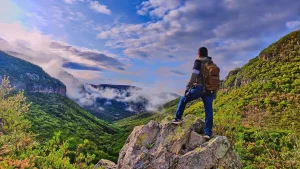
Safety tips for hiking in India
Here are a few safety tips to keep in mind while trekking in India:
- Altitude sickness: Do not underestimate altitude sickness. Always acclimatize properly by spending time at a certain elevation before going higher. Plan your itinerary to include rest days if necessary.
- Wildlife precautions: Be cautious around animals, especially stray dogs or any wild animals in the region. They might be rabid, aggressive, or pose a risk.
- Navigation: Carry detailed maps and compass with you, and learn how to read them to avoid getting lost. You can also rely on your local guide who is familiar with the area.
 Carry a map and compass with you
Carry a map and compass with you
By following these guidelines, you can enjoy a safe and memorable hiking experience in India. If you’re not only interested in hiking but also in climbing, indmount.org offers great information on this topic.
Feeling adventurous and ready to explore India as a hiking destination? We’re here to help plan your trip. Whether you are looking for long treks or short hikes, contact us and we will help you! Start planning your adventure with us now!
Frequently Asked Questions
Himachal Pradesh and Uttarakhand are two of the most famous places for trekking in India. Apart from these, the Western Ghats in Maharashtra, Munnar in Kerala, Ladakh, and Darjeeling in West Bengal are also some popular trekking destinations.
Hiking is shorter and easier than trekking. While hiking usually takes place on well-marked trails, trekking is often done in remote areas and is more challenging.
Stok Kangri is the highest trekking place in India, located at an altitude of 20,100 feet above sea level in the Stok range of Himalayas in Ladakh.
India has a quite a few tough treks, such as the Stok Kangri trek, Chadar trek, Pin Parvati trek, Goechala trek, and the Snow Leopard trek.
helping you travel your way
Everything you need to know about India is here We have tried writing about everything you may need help with for your trip to India, If you need help in planning a trip to India Get in touch with us to to plan your trip of a life time.



